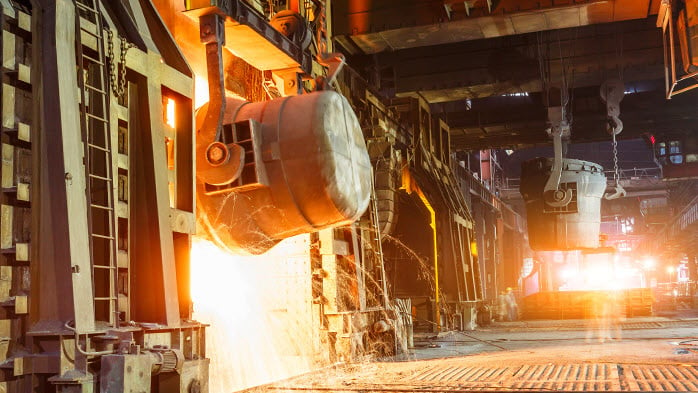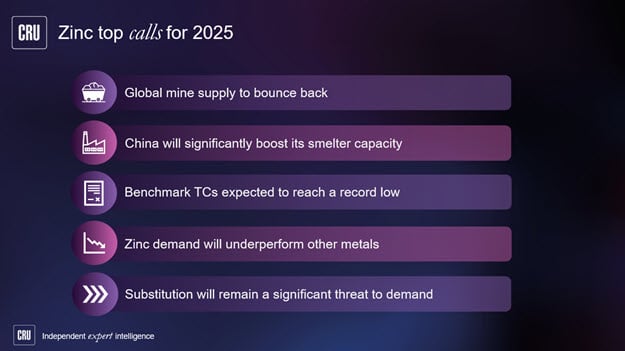-
35% of CRU metals and mining clients expect global growth between 0% and 1%, 17% expect GDP to fall, with clients in the Americas the most pessimistic
-
Prolonged inflation (70%), high energy prices (60%) and an escalation of the Russia-Ukraine war (47%) rank as the top global risks for 2023
-
CRU clients expect slower EV adoption than CRU forecast, only 7% believe our EV sales forecast of 18% of market share in 2023
LONDON, 25 January 2023 – More than half (52%) of CRU clients in the metals and mining industries expect global GDP to grow by no more than 1% in 2023, according to CRU’s annual macroeconomic survey of clients, which polled global clients from the metals and mining industries in December 2022. The outlook is bleaker than CRU’s forecast for global GDP growth in 2023, which sits at 1.6%.
Inflation, energy prices and the Russia-Ukraine war continue to shape global markets and remain front of mind heading into 2023.
In addition to the stark outlook for global growth, prolonged inflation was the most widely cited downside risk, with 70% of clients choosing it, followed by high energy prices (60%) and an escalation of the Russia-Ukraine war (47%). The main risks identified are closely related to each other, with energy prices driving inflation and the Russia-Ukraine war leading to higher energy prices. Interesting to note is that the impact of climate change in 2023 and a further deterioration in US-China relations has slipped down the list of threats in the view of those in the metals and mining industry, with only 11% and 4% citing these issues as downside risks.
All of the above risks contribute to inflation, leading the majority to expect inflation to average between 3-5% in the US and 4-6% in the eurozone. This is generally in line with CRU forecasts, of 4.1% and 5.5% respectively. However, CRU clients differ regionally, with clients based in Asia more cautious – compared to clients in the US and Europe, Asian clients expect a slower decline in inflation.
The energy crisis, lack of chips and lack of charging infrastructure could be driving more cautious expectations of electric vehicle adoption.
Our forecasts that EV sales will account for 18% of the market by 2023, up from 14% and 8% in 2022 and 2021 respectively, are not shared by CRU clients. The majority of respondents expect EV market share to grow more slowly, with 49% expecting the share of electric vehicles to be 14-16% in 2023 and 17% believing it will be even lower. Regionally, customers in the Americas are less optimistic, a likely reflection of the higher existing EV market share in Europe and China, but it could also indicate that the US green policy agenda has only partly filtered through to people’s perceptions.
Alex Tuckett, Head of Economics, CRU concludes:
The results paint a picture of a metals and mining sector that is cautious about the global economy in 2023, and mindful of the downside risks – an expected outcome of a volatile year. Climate-related risks have slipped down the agenda as the world focusses on the Russia-Ukraine war and resulting high energy prices and inflation, reflected in the forecasts for lower EV market share. We hope 2023 brings fewer economic and political shocks and more stability

















